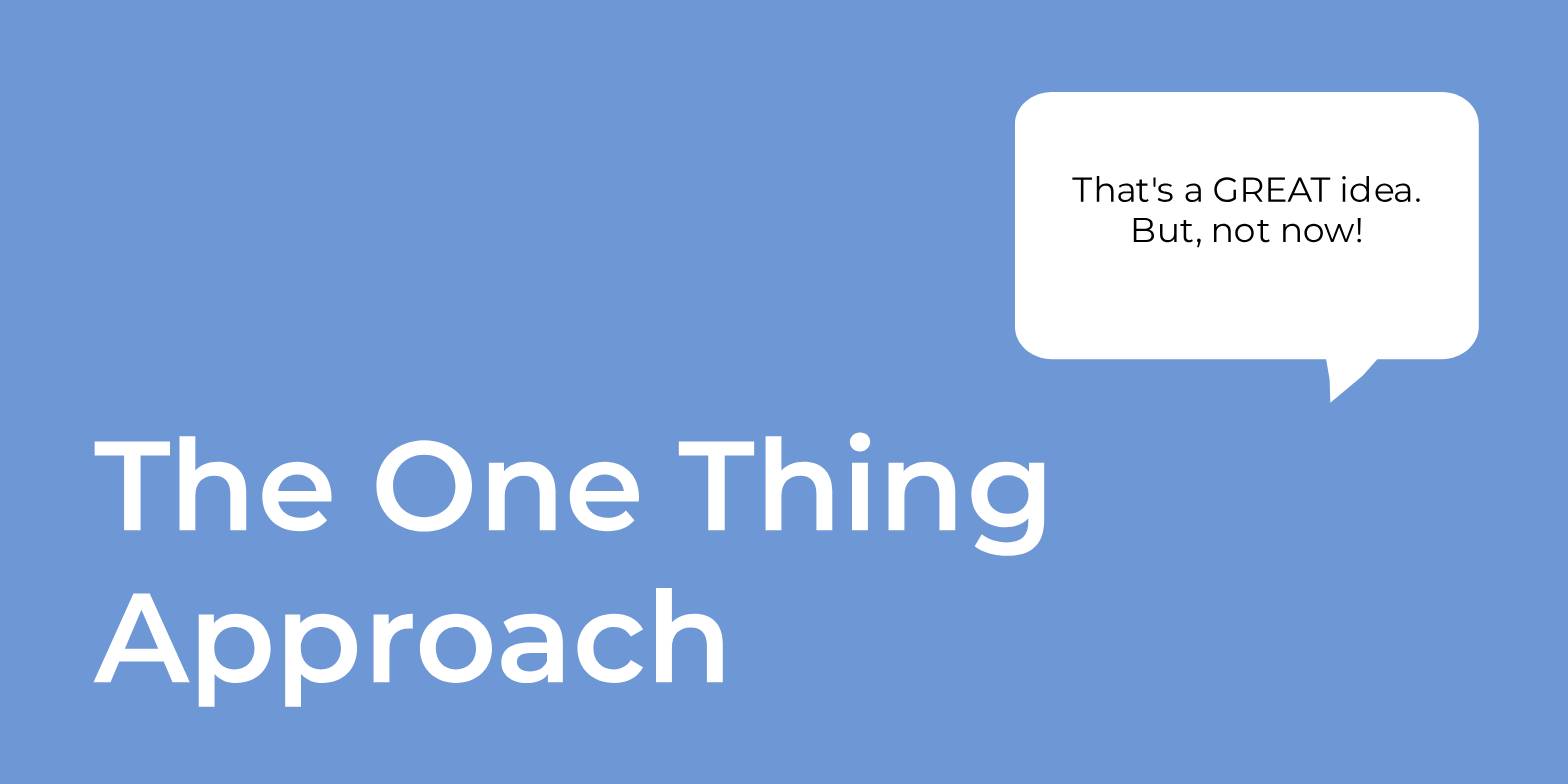Ambitious teams always have more ideas than time.
Which is why most growing companies aren’t suffering from a lack of opportunity – they’re drowning in good intentions.
There are initiatives in flight, decisions on hold, backlogs full of projects, and an endless stream of “urgent-but-not-important” requests.
The Cost of Too Much in Motion
When teams try to do everything at once, progress slows. Because when everything is a priority, nothing is a priority. There’s simply too much in motion. Pile on the constant interruption and switching between simultaneous projects, and there can be up to a 40% drain on human productivity. And the more we add, the less impact each thing has.
That’s the core principle of The One Thing by Gary Keller, and it’s echoed in Essentialism by Greg McKeown: Not everything matters equally. Focus on the vital few and eliminate the trivial many – do less, but better.
By now, it’s well understood that multi-tasking is a myth. The human brain can only truly focus on one thing at a time, which is why alignment on what’s important is critical.
To make progress, that one thing should be supported by no more than three active projects or sub-streams that directly serve it. Until one of those is completed, nothing else is added. This discipline protects teams from the overload that comes with juggling too many parallel efforts at once.
Three supporting tasks give us options to maintain momentum when one project hits a snag without adding the stress of a 4th, 5th or 6th. This reduces the mile-wide-inch-deep trap that ambitious teams often fall into.
The Discipline of Trade-Offs
Trade-offs are part of the deal. Saying yes to your one thing and three supporting projects means saying no or ‘not now’ to others. That can feel stifling to visionaries who see opportunity everywhere. But the cost of scattering attention is much higher than the discomfort of a few tough “not nows.”
Once the three supporting projects are chosen, break them down into a series of smaller, achievable milestones within a fixed time-box. Ask… what can we reasonably accomplish in one, two or four week cycles? By building-in a time constraint, it forces us to get crystal clear and honest about what can actually be accomplished within a pre-set window.
The value of the “One Thing” shows up as:
- More focus, clearer communication & higher morale because everyone knows the priority
- Faster decision-making because everything filters through “does this support our one thing?”
- Reduced switching and cognitive load because the team isn’t juggling excessive priorities
How to Apply the One Thing
Here are a few ways to put the One Thing approach into practice with your team:
- Cap work in progress: Limit simultaneous projects. Start by focusing on the One Thing.
- Define your top three: Define the top three most important projects that support the One Thing. Decide “not now” for everything else.
- Break down the work: Define the key milestones over a series of time-boxed calendar cycles or ‘sprints’. (i.e. 1, 2, 4 week cycles)
- Use a single source of truth: Use tools like Asana, Monday, or Click-up to bring visibility and clarity.
- Minimize meetings: Protect focus. Run brief “check-ins” and remove mid-stream barriers.
- Adapt Quickly: Leverage real-world feedback and data to adjust along the way.

